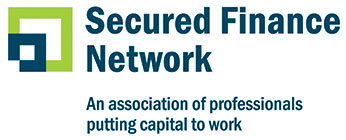- Middle-Market Companies Find Opportunity in Food & Beverage Disruption
- Flight Rules for Risk Management - Top Takeaways from NASA's Norman Knight
- ABL Resurgence: New Client Growth, Stabilized Portfolios, and Cautious Optimism Mark Q2 2025
- In the Spotlight: Women-Dominated Teams in Secured Finance
- Ally and Affinity Groups: Helping to Bring Our True Selves to Work
The Ins & Outs of DEI Fatigue
April 11, 2024
By Dr. Arin Reeves
“The most critical time in any battle is not when I’m fatigued, it’s when I no longer care.” — Craig D. Lounsbrough
One of the challenges of working in DEI is people’s urgent fascination with the most recent DEI concept, topic, or phrase they “discovered” in an article or conversation. The urgency is mostly well-intentioned, but it is often equally not well-informed. Since the DEI “field” is a potpourri of research, advocacy, political ideations, and personal perspectives from multiple fields, it is difficult for people to know which sources of information to trust. So, the most recent DEI encounter — regardless of the source — often becomes the subject of the most urgent fascination.
One of the latest urgent fascinations that has captured our collective attention is “DEI Fatigue.” Over the past few months, I’ve had several emails and conversations with people who are concerned about how fatigued people are after the past few years. I received one email from an executive in a large company that read, “I just read an article on this new thing called DEI fatigue. Is this because of what’s happening politically? Have you heard of this before?”
I sighed deeply when I read this email, and I responded as patiently as I could with, “I wrote about this in 2009. It was called Diversity Fatigue then because most organizations had not yet embraced inclusion and equity. It is not new, but it should be addressed. Let’s discuss in more detail when you get a chance.”
DEI Fatigue is real and important to address, but it is not new. Wherever there is work to change the status quo, there is fatigue in and about the work. The fatigue hasn’t changed much since I wrote about it almost 15 years ago, except that there are new participants in the dialogue who are maybe experiencing fatigue for the first time, and the people who were fatigued then are downright exhausted now. The fatigue is not new, but it is very real. And it is always a good time to start having a conversation about it.
It is also important to note that DEI fatigue has multiple layers, and people in underrepresented groups that have been fighting for inclusion for years may be experiencing deeper levels of fatigue than people who are newer to DEI work. For example, women who have been working on gender equity and inclusion for years may be experiencing the fatigue differently than women from younger generations who are newer to the work in the workplace. Women of color may experience the fatigue differently than white women, and women from LGTBQ communities may experience it differently from women who don’t share those identities. All of the women working on gender equity and inclusion may be experiencing fatigue, different groups may be experiencing it at different depths given their personal journeys and experiences.
Please click here to continue reading.
One of the challenges of working in DEI is people’s urgent fascination with the most recent DEI concept, topic, or phrase they “discovered” in an article or conversation. The urgency is mostly well-intentioned, but it is often equally not well-informed. Since the DEI “field” is a potpourri of research, advocacy, political ideations, and personal perspectives from multiple fields, it is difficult for people to know which sources of information to trust. So, the most recent DEI encounter — regardless of the source — often becomes the subject of the most urgent fascination.
One of the latest urgent fascinations that has captured our collective attention is “DEI Fatigue.” Over the past few months, I’ve had several emails and conversations with people who are concerned about how fatigued people are after the past few years. I received one email from an executive in a large company that read, “I just read an article on this new thing called DEI fatigue. Is this because of what’s happening politically? Have you heard of this before?”
I sighed deeply when I read this email, and I responded as patiently as I could with, “I wrote about this in 2009. It was called Diversity Fatigue then because most organizations had not yet embraced inclusion and equity. It is not new, but it should be addressed. Let’s discuss in more detail when you get a chance.”
DEI Fatigue is real and important to address, but it is not new. Wherever there is work to change the status quo, there is fatigue in and about the work. The fatigue hasn’t changed much since I wrote about it almost 15 years ago, except that there are new participants in the dialogue who are maybe experiencing fatigue for the first time, and the people who were fatigued then are downright exhausted now. The fatigue is not new, but it is very real. And it is always a good time to start having a conversation about it.
It is also important to note that DEI fatigue has multiple layers, and people in underrepresented groups that have been fighting for inclusion for years may be experiencing deeper levels of fatigue than people who are newer to DEI work. For example, women who have been working on gender equity and inclusion for years may be experiencing the fatigue differently than women from younger generations who are newer to the work in the workplace. Women of color may experience the fatigue differently than white women, and women from LGTBQ communities may experience it differently from women who don’t share those identities. All of the women working on gender equity and inclusion may be experiencing fatigue, different groups may be experiencing it at different depths given their personal journeys and experiences.
Please click here to continue reading.
About the Author
© 2025 Secured Finance Network


.jpg?sfvrsn=f1093d2a_0)
